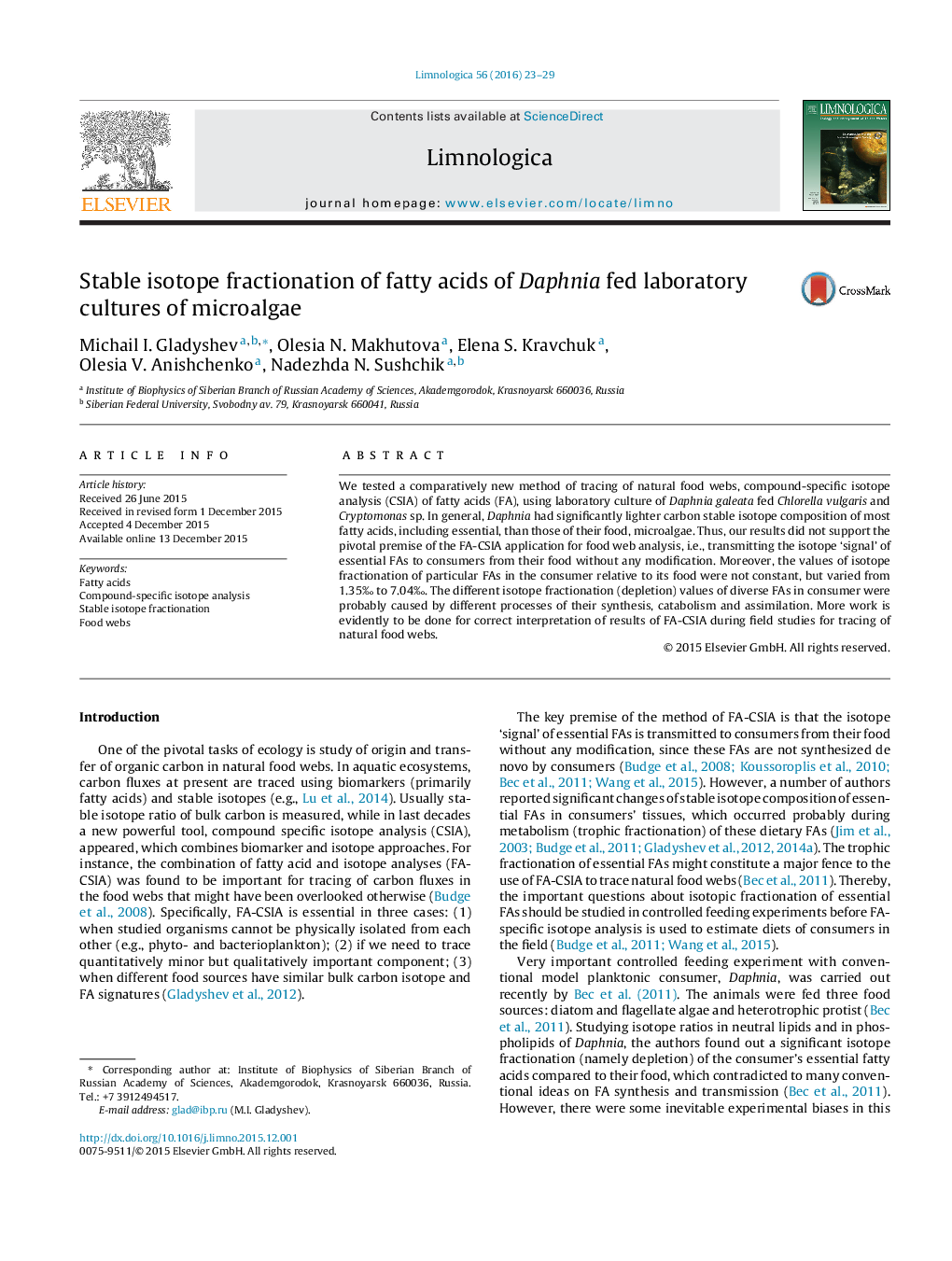| Article ID | Journal | Published Year | Pages | File Type |
|---|---|---|---|---|
| 4400356 | Limnologica - Ecology and Management of Inland Waters | 2016 | 7 Pages |
•We did compound specific isotope analyses of fatty acids (CSIA-FA) in laboratory.•CSIA-FA was done for Daphnia fed batch cultures of Chlorella and Cryptomonas.•All essential polyunsaturated FA in Daphnia were lighter than those in microalgae.•There was no constant value of isotope fractionation of FA in Daphnia.•The results contradicted common way of interpretation of CSIA-FA in field studies.
We tested a comparatively new method of tracing of natural food webs, compound-specific isotope analysis (CSIA) of fatty acids (FA), using laboratory culture of Daphnia galeata fed Chlorella vulgaris and Cryptomonas sp. In general, Daphnia had significantly lighter carbon stable isotope composition of most fatty acids, including essential, than those of their food, microalgae. Thus, our results did not support the pivotal premise of the FA-CSIA application for food web analysis, i.e., transmitting the isotope ‘signal’ of essential FAs to consumers from their food without any modification. Moreover, the values of isotope fractionation of particular FAs in the consumer relative to its food were not constant, but varied from 1.35‰ to 7.04‰. The different isotope fractionation (depletion) values of diverse FAs in consumer were probably caused by different processes of their synthesis, catabolism and assimilation. More work is evidently to be done for correct interpretation of results of FA-CSIA during field studies for tracing of natural food webs.
Graphical abstractFigure optionsDownload full-size imageDownload as PowerPoint slide
